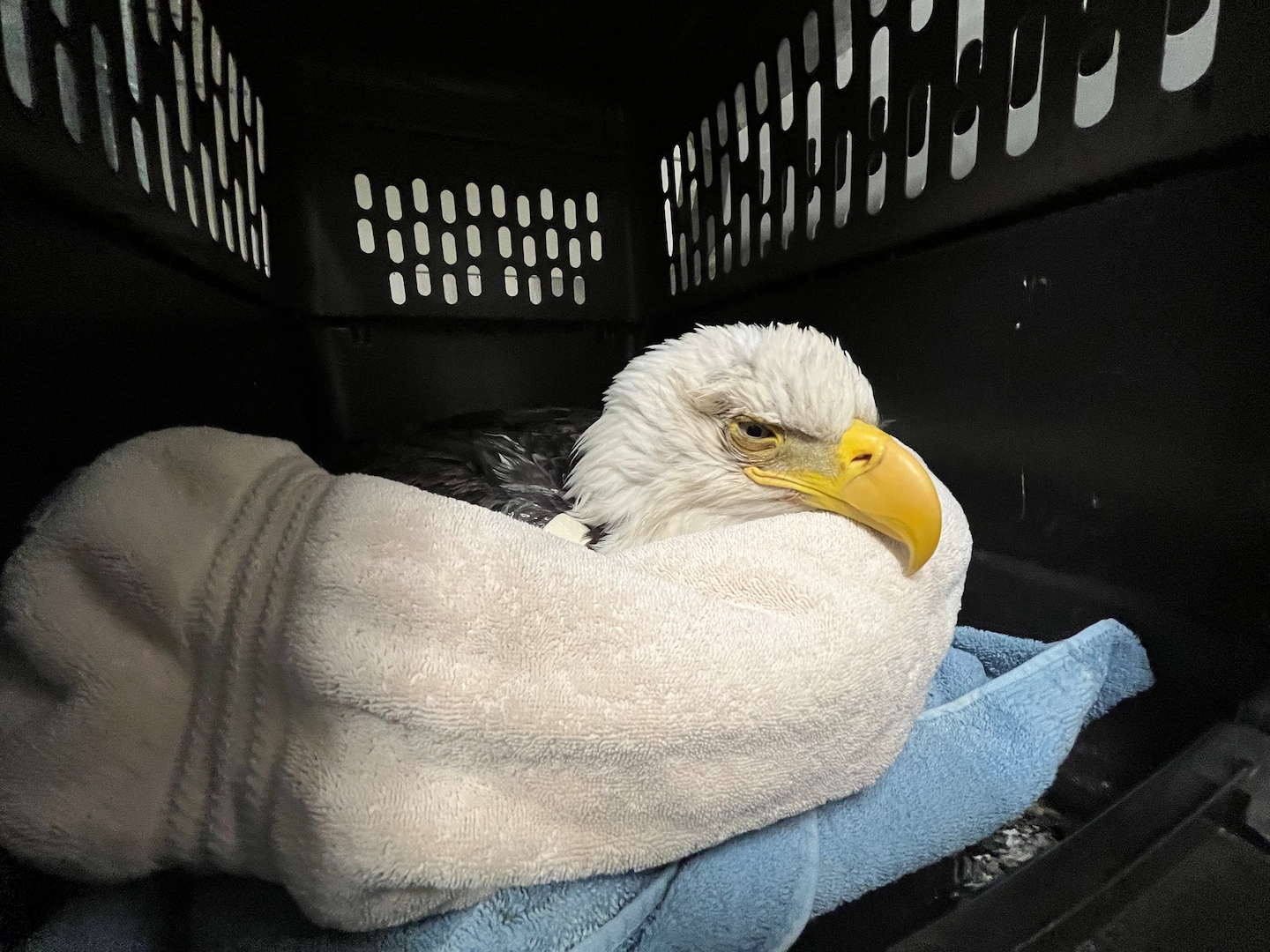At first, the case seemed typical to the Raptor Center staff, who help care for thousands of birds — from eagles and hawks to owls and vultures — each year. They’d even seen a few cases of pentobarbital poisoning before.
But usually, the calls are for one bird.
So the next morning, on Dec. 5, when the center received a second call about a bald eagle in the same condition as the first, found in the same area in Inver Grove Heights, Minn., the case became anything but typical.
The Raptor Center volunteer who went to rescue the second bald eagle instead found nine sick birds in the area, some with their beaks facing down in the snow.
“That set off alarms for us, especially because there was a landfill nearby, which can often be the culprit for how these birds get exposed,” said veterinarian Victoria Hall, executive director of the center.
On Dec. 6, state and federal wildlife officials found another sick bird and two dead eagles in Inver Grove Heights. At least 13 eagles were poisoned and are suspected to have eaten from animal carcasses dumped in the landfill, authorities say.
The eleven sick birds were brought to the Raptor Center for treatment last week, Hall said. Wildlife agencies are investigating the incident, previously reported by the Star Tribune.
Under Minnesota law, animal carcasses must be disposed through incineration, rendering, composting, burial deep enough to “prevent scavenging” or other methods approved by the state.
“We’ve definitely seen volumes of sick birds, but not from pentobarbital before like this,” Hall said.
The first call about a sick eagle came into the Raptor Center on Dec. 4 from the Inver Grove Heights Police Department, she said.
When the volunteer sent to rescue the second bird saw nine ill eagles, more rescue and transport volunteers went to the scene. The eagles were put in crates and cardboard boxes, all wet and cold from lying in the Minnesota snow.
Raptor Center workers began intensive care on the birds, drawing blood samples for toxicology and lead testing. The eagles were given fluids and any food in their crops — the storage area beneath their chins — was removed in case it had poison in it.
They were also swabbed for avian flu, which the center has seen in hundreds of birds since March. Of the more than 200 positive cases seen at the center this year, 47 of them were in bald eagles.
One of the 11 eagles that had symptoms of pentobarbital poisoning also had avian flu and died. But Hall said she is “optimistic” that the other 10 will recover. Three also have lead poisoning, which eagles can pick up from scavenging on deer that were shot with ammunition containing lead, Hall said.
“Just like pentobarbital, that’s coming completely from humans, which means we have the ability to impact it and address it,” she said.
Previously included on the national endangered species list, bald eagles are protected under federal laws. The incident in Minnesota, Hall said, is a clear example of how human actions can negatively affect the national bird — and the ecosystem as a whole.
“We see hundreds of cases of poisonings every year with the raptors that come into our center for care,” she said. “Lead, rodenticide, in this case pentobarbital, and these are all things that we as humans have an ability to prevent from happening in the future, if we’re aware of it.”
The Raptor Center has set up a crowdfunding effort as it continues to care for 10 bald eagles.
Last week, the eagles couldn’t sit up on their own during their medical exams and treatment, so the center’s staff used rolled-up towels to help support their bodies.
But over the weekend, the birds started “acting up,” Hall said. They sat up on their own, flapped their wings, made noise and stuck their heads up inside their crates, looking around suspiciously as the staff worked.
In short, Hall said, they’ve started to get their “spunk” back.
“It just lifted everybody’s spirits so much because we know these birds are going in the right direction,” she said.
Soon, they’ll be taken from their crates to flight rooms so they’ll have space to spread their wings. From there, the birds will graduate to outdoor flight pens, where they can fly and to get used to the weather again.
And once they’ve been tested and cleared, they’ll be released to fly back into the wild.
